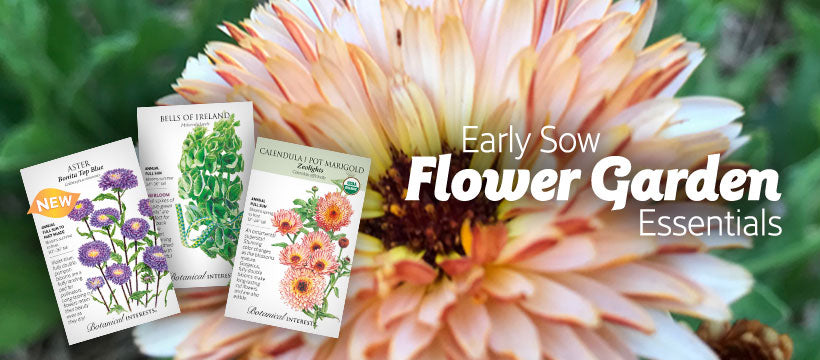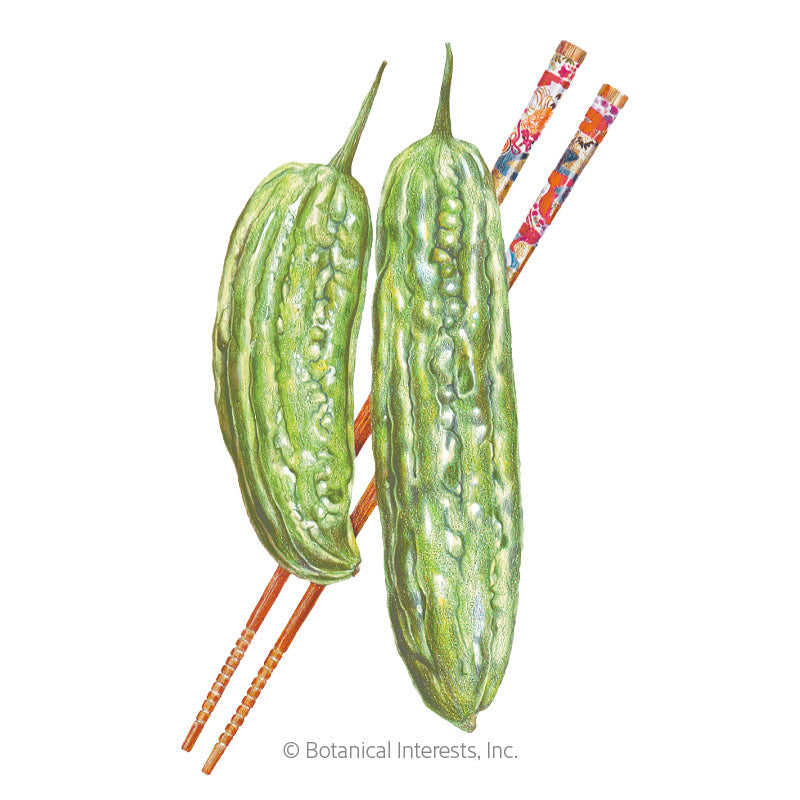
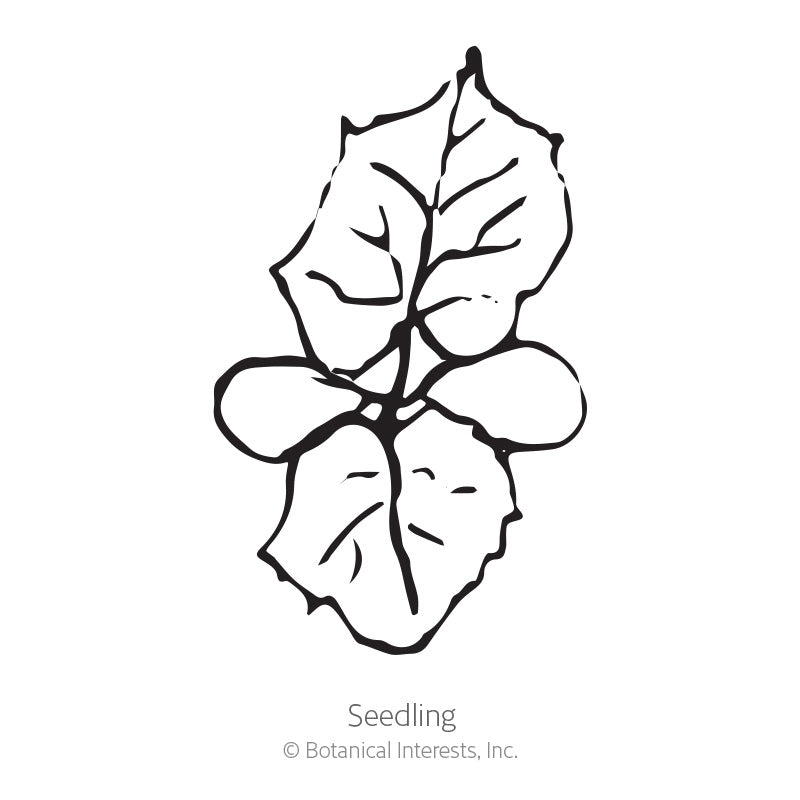
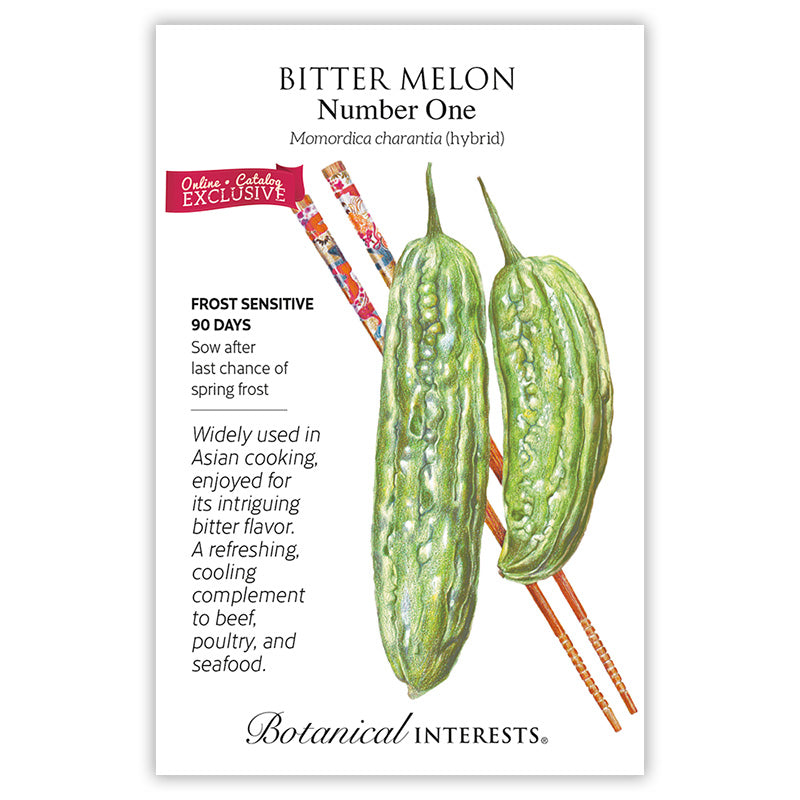
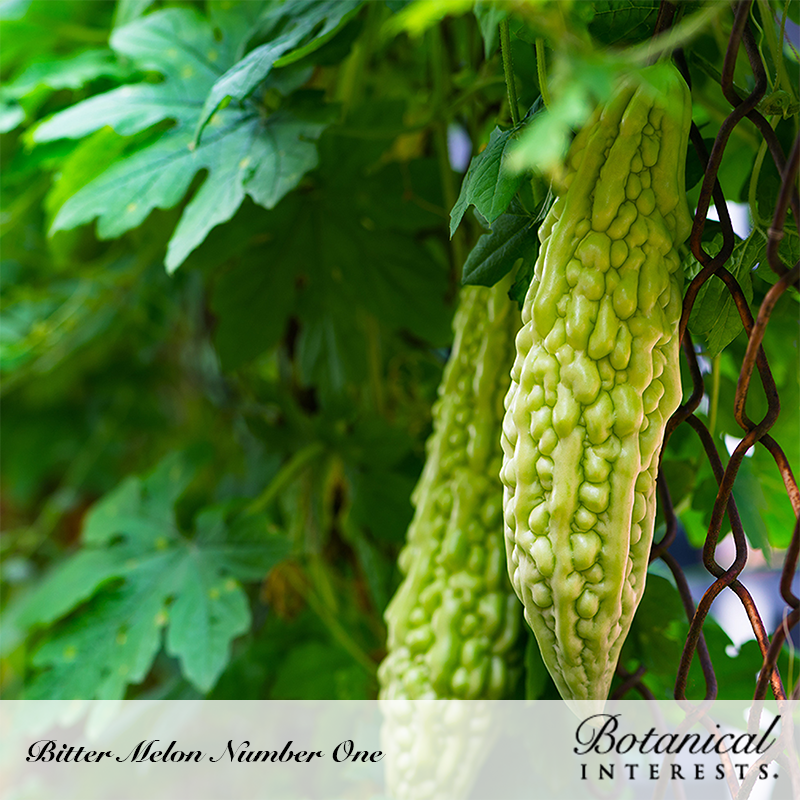
- Variety Info
- Sowing Info
- Growing Info
- Learn More
Variety Info
Days to Maturity: 90 days
Family: Cucurbitaceae
Native: Africa, Asia, Australia, the Pacific
Hardiness: Frost-sensitive perennial in USDA zones 10 and warmer
Exposure: Full sun
Plant Dimensions: 6'–8' trailing or climbing vine
Variety Info: 8"–9" (at maturity) long, oval, tapering to a point at each end. When young, bitter melon is yellowish green with lumps and ripens to yellow and then bright orange. Monoecious (both male and female flowers appearing on any given plant). Also called bitter gourd, karela, or balsam pear.
Attributes: Frost Sensitive
Sowing Info
When to Sow Outside: RECOMMENDED. 1 to 2 weeks after your average last frost date, and when soil temperature is 70°–90°F.
When to Start Inside: Recommended for short–season areas. 2 to 4 weeks before transplanting within 2 weeks after your average last frost date. Sow into biodegradable pots that can be directly planted in the ground; roots are sensitive to disturbance.
Days to Emerge: 10–20 days
Seed Depth: 3/4"
Seed Spacing: 2 seeds every 24"
Row Spacing: 24" on a trellis or fence
Thinning: When 2" tall, thin to 1 every 24"
Growing Info
Harvesting: Most gardeners harvest fruit at 4"-6" before it turns orange. When the outside of the fruit turns orange, the pulp softens, sweetens, and turns scarlet. Many find the fruit texture undesirable at this stage. Bitterness levels may vary from fruit to fruit.
